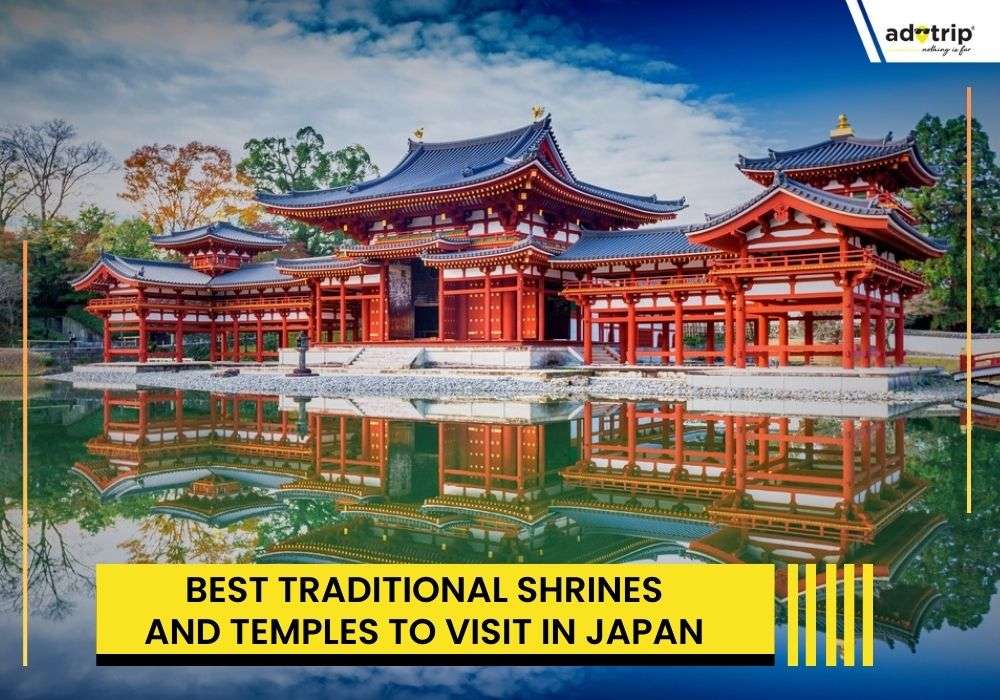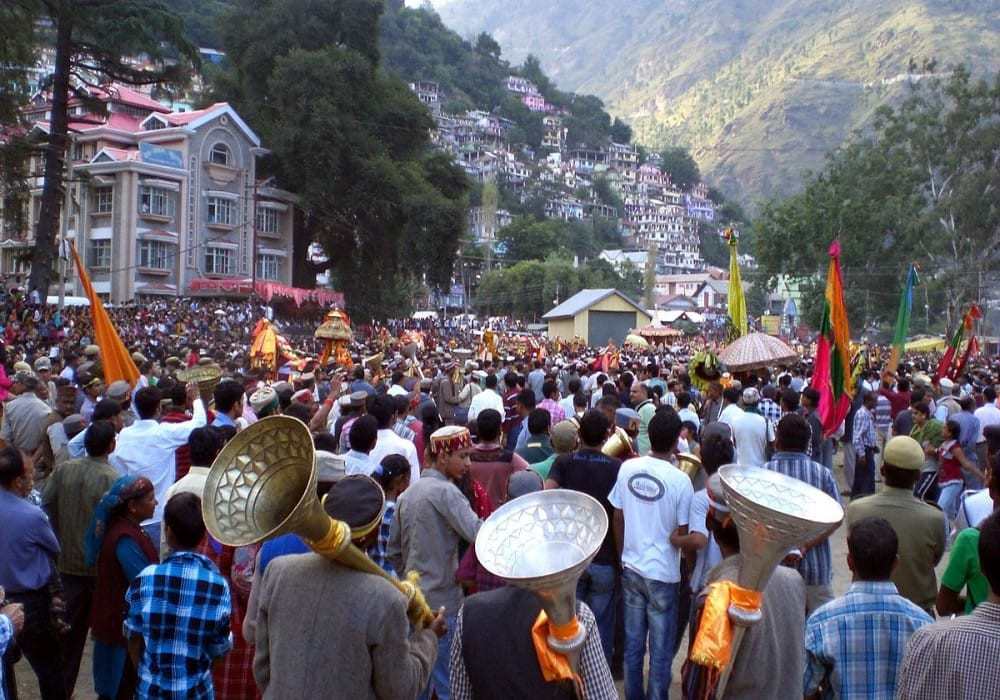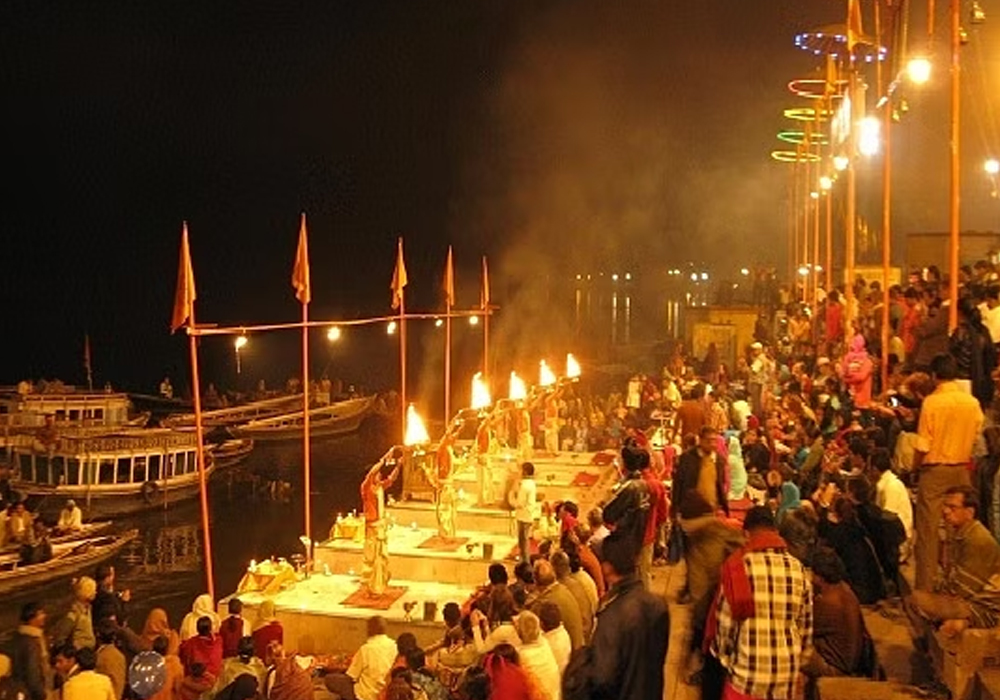
Last Updated At: 23-May-2024
21 Famous Temples In Uttar Pradesh | You Must Visit In 2024
Have you ever felt the pull of divine energy calling you to explore the spiritual heart of India?
Uttar Pradesh, a land woven with tales of gods, goddesses, and mystical lore, invites you on a sacred journey that transcends the boundaries of the ordinary. This region, steeped in history and spirituality, is home to an array of breathtaking temples, each narrating stories of faith, devotion, and architectural grandeur.
In the temples of Uttar Pradesh, history and divinity intertwine to create sanctuaries of peace and power. From the ghats of Varanasi, where the Kashi Vishwanath Temple stands as a beacon of faith, to the serene premises of the Krishna Janmabhoomi Temple in Mathura, every corner of this state offers a glimpse into the soul of India. These temples are not just structures of stone and mortar; they are living testimonies to the timeless cultural heritage and spiritual legacy of Uttar Pradesh.
List Of 21 Best Temples In Uttar Pradesh
- Banke Bihari Mandir | Divine Krishna Abode
- Prem Mandir | Love's Illuminated Shrine
- Kashi Vishwanath Mandir | Sacred Shiva Sanctum
- Shri Krishna Janmabhoomi Temple | Krishna's Birthplace Grace
- Shri Ram Janma Bhoomi Temple | Rama's Sacred Origin
- Jwala Devi Temple | Fiery Goddess Dwelling
- Vishalakshi Temple | Divine Gauri Shrine
- Alopi Devi Mandir | Mysterious Deity Oasis
- Katyayani Peeth Temple | Divine Mother's Seat
- Gorakhnath Temple | Yogi's Spiritual Haven
- Sarnath Temple | Enlightenment Echo
- Baldeo Dauji Temple | Balram's Ancient Abode
- Dwarkadheesh Temple | Lord of Dwarka
- Doodheshwar Temple | Shiva's Divine Sanctum
- Sankat Mochan Temple | Obstacle's Release
- Tulsi Manas Temple | Epical Wisdom Abode
- Naimisharanya Temple | Lord Vishnu's Realm
- Maa Vindhyavasini Temple | Mountain Goddess Home
- Radha Rani Temple | Love's Hilltop Haven
- Kaal Bhairav Temple | Kotwal of Kashi
- Patalpuri Temple | Subterranean Sanctuary
1. Banke Bihari Mandir | Divine Krishna Abode
Nestled in the heart of Vrindavan, the Banke Bihari Mandir stands as a testament to devotion's artistic expression. Adorned with intricate marble carvings that seem to come alive under the sun's gentle touch, the temple houses a mesmerising idol of Krishna, believed to have manifested through the spiritual grace of Swami Haridas. Constructed in the 18th century by the visionary Maharaja Sawai Jai Singh II of Jaipur, this temple is more than just a place of worship; it's a sanctuary where time stands still and hearts connect with the divine. Every year, millions of devotees embark on a journey to this enchanting abode, seeking solace and a profound connection to their inner selves.
- Location: Vrindavan
- Timings: 6 AM to 9 PM
2. Prem Mandir | Love's Illuminated Shrine
In the heart of Barsana, the Prem Mandir stands as a monument to love's eternal dance. This temple, dedicated to Radha Krishna, transcends the boundaries of time and Uttar Pradesh temple architecture. Built in the 20th century by the philanthropist Shri Radhey Shyam Poddar, the Prem Mandir is a symphony of delicate carvings and majestic design. Beyond its physical beauty, the temple embraces a unique tradition—a cascade of love locks adorning its gates, a testament to the unbreakable bonds that love weaves. With every padlock's click, this temple becomes not just a place of worship, but a shrine of devotion where love stories intertwine with the divine narrative.
- Location: Vrindavan
- Timings: 5:30 AM to 8:30 PM
3. Kashi Vishwanath Mandir | Sacred Shiva Sanctum
Varanasi's labyrinthine streets lead to the Kashi Vishwanath Mandir, an embodiment of spiritual continuity. This temple, consecrated to Lord Shiva, is a cornerstone of Hindu pilgrimage, standing as a beacon of the ancient faith's endurance and one of the most famous temples in Uttar Pradesh. It is thought to be one of the twelve radiant Jyotirlingas and carries the weight of centuries within its sacred walls. Reconstructed time and again, the present structure boasts a stately elegance, its white marble façade mirrored in the reflective waters of the Ganges. It's a dwelling where devotion fuses with history, where seekers of the divine traverse the thresholds of time.
- Location: Varanasi
- Timings: 4 AM to 9 PM
4. Shri Krishna Janmabhoomi Temple | Krishna's Birthplace Grace
Mathura, the hallowed grounds of the Shri Krishna Janmabhoomi Temple, cradle the essence of devotion's origin. This temple, dedicated to Lord Krishna, celebrates the birthplace of the deity himself. The temple's history bears scars of a tumultuous past, ravaged by Aurangzeb's ire in the 17th century. Rebuilt in the 20th century, it symbolises the resilience of faith and the unyielding bond between mortals and the divine. Pilgrims flock to this sacred site to glimpse the temple’s grandeur and immerse themselves in the legacy of Krishna's earthly arrival.
- Location: Janam Bhumi, Mathura
- Timings: 5 AM to 9:30 PM
5. Shri Ram Janma Bhoomi Temple | Rama's Sacred Origin
On the banks of the Sarayu River in Ayodhya, the Shri Ram Janma Bhoomi Temple emerges like a phoenix from the annals of history. The temple, dedicated to Lord Rama, marks the revered birthplace of the deity. Traversing a tumultuous journey through time, the temple's legacy was shattered by Babur's conquests in the 16th century. However, its spirit remained unbroken, and now, as the temple nears its completion in 2024, a collective heartbeat resounds with anticipation. Devotees await the rebirth of this famous temple in Uttar Pradesh, not just as a magnificent structure but as a reservoir of faith, embodying the timeless saga of Rama's grace.
- Location: Ayodhya
- Timings: 7 AM to 6 PM
6. Jwala Devi Temple | Fiery Goddess Dwelling
Nestled in the tranquil town of Sonbhadra, the Jwala Devi Temple stands as a testament to both ancient mythology and natural wonder. Dedicated to the goddess Jwalamukhi, it's a place where legend melds with reality. The temple's sacred roots trace back to the myth of Goddess Sati, whose tongue is believed to have fallen here. This temple is a breathtaking spectacle not only for its architectural grandeur but for its natural springs that defy explanation—flames that dance upon the water's surface, revered as manifestations of the goddess herself. The temple's history, shaped by destruction and rebirth, echoes the cycles of devotion that millions of pilgrims continue to honour each year.
- Location: Sonbhadra
- Timings: 7 AM to 9 PM
7. Vishalakshi Temple | Divine Gauri Shrine
On the banks of the Ganges River in the city of Varanasi, the Vishalakshi Temple reigns as a sanctuary of cosmic insight. This abode of the goddess Parvati, known as Vishalakshi for her majestic eyes, channels the divine energy of Adi Shakti. The temple, a Shakti Pitha, resonates with the essence of Hindu mythology and is believed to be the spot where Goddess Sati's earrings fell. Carved from polished black stone in 1971, the goddess presides with a tranquil yet potent aura. Pilgrims converge to cleanse their spirits in the Ganges before standing before her divine gaze, seeking blessings and transformation.
- Location: Varanasi
- Timings: 6 AM to 10 PM
Read More : Food Of Uttar Pradesh
8. Alopi Devi Mandir | Mysterious Deity Oasis
In the embrace of Prayagraj's sacred confluence, the Alopi Devi Mandir stands as a unique testament to faith. This temple, situated near the Sangam of the Ganges, Yamuna, and mythical Sarasvati rivers, offers a distinct reverence. Unlike traditional temples, a wooden carriage—the "doli"—assumes the role of veneration. Named after the enigmatic "disappearance" of a part of the goddess, Alopi Devi holds an enduring connection with the region’s people. Every milestone of life resonates within her ethereal guardianship, from joyous celebrations to solemn farewells.
- Location: Prayagraj
- Timings: 12 AM to 11:59 PM
9. Katyayani Peeth Temple | Divine Mother's Seat
Amid the sacred aura of Vrindavan, the Katyayani Peeth Mandir weaves a tapestry of spiritual unity. A shrine that transcends sampradayas, it embraces five diverse sects, each with its distinct mode of worship. Within the temple's white marble façade, the idols of Katyayani, Shiva, Laxmi Naarayan, Ganesh, and Surya receive devotion, while Jagatdhatri Devi's presence adds to the divine tapestry. As time dances across its pillars, this temple remains a haven of diversity, bridging the paths of devotion into a harmonious symphony.
- Location: Mastemau
- Timings: 7 AM to 8 PM
10. Gorakhnath Temple | Yogi's Spiritual Haven
In the heart of Gorakhpur, the Gorakhnath Temple stands as an ode to timeless spirituality. Dedicated to Lord Shiva and founded by the revered Gorakhnath in the 11th century, the temple exudes a profound connection with the Nath Yogis. This place of pilgrimage not only beckons Hindus, but also Yogis seeking spiritual growth and unlike usual Uttar Pradesh temple architecture, this one is an amalgamation of ancient and modern construction technique. With its serene atmosphere and the tranquil Mansarovar pond beside it, where meditation and boat rides intertwine, the temple transcends history and remains an enduring testament to the union of earthly devotion and yogic aspiration.
- Location: Gorakhpur
- Timings: 3 AM to 10 PM
11. Sarnath Temple | Enlightenment Echo
Amidst the ancient city of Sarnath, the Sarnath Temple stands as a testament to a pivotal moment in Buddhism's history. This sacred complex, where Gautama Buddha delivered his first sermon, transcends time with its tranquil aura. Emperor Ashoka's vision breathed life into the temple in the 3rd century BC, a legacy that has been shaped by destruction and reconstruction over the ages. The current structure, born in the 18th century, cradles the spiritual essence of countless pilgrims. Within its embrace, stupas like the Dhamek Stupa echo with the whispers of the past, while the Chowkhandi Stupa commemorates the meeting of Buddha with his five disciples. The Sarnath Temple isn't just a sanctuary; it's a living testament to the transformative power of enlightenment.
- Location: Varanasi
- Timings: 6 AM to 7 PM
12. Baldeo Dauji Temple | Balram's Ancient Abode
In the heart of Gokul, the Baldeo Dauji Temple reverberates with the strength of devotion. Dedicated to Krishna, the temple's intricate carvings and mesmerising architecture capture the essence of divine grace. Here, Krishna is embraced as Baldeo—the embodiment of strength. A pilgrimage site that draws millions each year, the Baldeo Dauji Temple stands as a testament to Krishna's enduring allure. Its history, intertwined with legends of devotion, culminates in the sacred Kshir Sagar, the "Sea of Milk," where the Lord's essence is said to reside eternally.
- Location: Chhabirau
- Timings: 7 AM to 12 PM, 3 to 4 PM, 7 to 8 PM
Read More : Water Parks In Uttar Pradesh
13. Dwarkadheesh Temple | Lord of Dwarka
Gleaming in the spiritual tapestry of Mathura, the Dwarkadheesh Temple stands as a tribute to eternal love. Built in 1814 by the devoted Seth Gokul Das Parikh, this temple reverberates with the divine presence of Lord Krishna and his beloved Radharani. The vibrant paintings and sculpted idols within the walls of this one of the most beautiful temples near Varanasi, Uttar Pradesh, mirror the kaleidoscope of devotion that sweeps through its halls. A testament to the architectural beauty and spiritual resonance, the Dwarkadheesh Temple invites pilgrims to bask in the radiance of Krishna's divine grace.
- Location: Mathura
- Timings: 6 AM to 11 PM
14. Doodheshwar Temple | Shiva's Divine Sanctum
In the heart of Ghaziabad, the Doodheshwar Mahadev Mandir emerges as a sacred haven of history and mythology. This self-originated temple, devoted to Lord Shiva, carries the blessings of the ages. A legend that intertwines the grace of Chhatrapati Shivaji Maharaj and the divine presence of Doodheshwar Mahadev weaves through its story. As a repository of myth and faith, the temple is a living chapter in the eternal saga of devotion.
- Location: Ghaziabad
- Timings: 4 AM to 10:30 PM
15. Sankat Mochan Temple | Obstacle's Release
By the banks of the Assi River in Varanasi, the Sankat Mochan Temple beckons devotees seeking refuge from life's obstacles. Established by the revered Sri Goswami Tulsidas, this temple is a sanctuary to Hanuman, the remover of hindrances. The temple near Varanasi, Uttar Pradesh, resonates with the ageless chants of devotion, a testament to millions' unwavering faith in its sacred grounds. As the gentle waters of the Assi River flow by, the Sankat Mochan Temple stands as a beacon of hope, a refuge for the souls seeking solace and blessings.
- Location: Varanasi
- Timings: 5:30 AM to 12 AM
16. Tulsi Manas Temple | Epical Wisdom Abode
In the ancient city of Varanasi, the Tulsi Manas Temple weaves a tapestry of devotion and artistry. As a revered site within the sacred pilgrimage circuit, this temple is a tribute to Lord Rama. Constructed by the Sureka family of Banaras, the temple's white marble structure and enchanting architecture evoke a sense of divine grace. Within its hallowed walls, the idols of Lord Rama, Lakshman, Sita, and Hanuman radiate with the essence of devotion. Yet, what truly captivates the soul is the wall adorned with vivid depictions from the Ramayana, a visual narrative that unfurls the epic's essence. Beyond its spiritual embrace, the temple houses a museum, inviting travellers to immerse themselves in the wisdom of the Hindu epic Ramayana.
- Location: Varanasi
- Timings: 9 AM to 5 PM
Read More : Culture Of Uttar Pradesh
17. Naimisharanya Temple | Lord Vishnu's Realm
In the sacred realm of Uttar Pradesh, the Naimisharanya Temple echoes the ancient whispers of divine manifestation. Among the self-manifested or Swayamvyaktha Kshetra temples, this sanctum dedicated to Lord Vishnu stands as one of the eight temples that emerged on their own. Nestled by the river Gomati, Naimisharanya Temple, one of the most off-the-beaten-path temples in Uttar Pradesh, brims with mythological tales. The sacred kund, believed to be formed from Lord Vishnu's Chakra, reflects a cosmic connection. Around its sanctum, the trees stand as forms of the divine, resonating with the energy of the gods and sages.
- Location: Lucknow
- Timings: 5 AM to 9 PM
18. Maa Vindhyavasini Temple | Mountain Goddess Home
In the heart of Mirzapur, the Maa Vindhyavasini Temple emerges as a sanctuary of divine strength. An incarnation of Goddess Durga, Maa Vindhyavasini is worshipped here as Mahishasura Mardini, the conqueror of the demon Mahishasura. Set against the backdrop of the Ganges, this temple holds a profound place in the hearts of the people of Uttar Pradesh and Bihar. Each day, devotees gather with hope, seeking blessings of happiness and prosperity from the mighty goddess.
- Location: Mirzapur
- Timings: 5 AM to 12 PM, 1:30 PM to 7:15 PM, 8:15 PM to 10:30 PM
19. Radha Rani Temple | Love's Hilltop Haven
At the peak of a hill in Barsana, the Radha Rani Temple celebrates the essence of devotion to Goddess Radha. This temple, standing for over four centuries, pays homage to the divine love of Radha and Krishna. Its red and white stone architecture is a living symbol of their eternal bond. A pilgrimage site where time seems to blend with the divine, the Radha Rani Temple becomes a radiant spectacle during Janmashtami and Radha Rani Janmashtami, and this time is the best time to visit temples in Uttar Pradesh as well. In the heart of Barsana, the temple's devotion-infused atmosphere gives birth to the joyous celebration of Lattmar Holi, spreading the colours of devotion and love.
- Location: Barsana
- Timings: 5 AM to 9 PM
20. Kaal Bhairav Temple | Kotwal of Kashi
In the ancient city of Varanasi, the Kaal Bhairav Temple is a guardian of Creation. Dedicated to the fierce form of Shiva, Kaal Bhairav, this temple carries a legacy of history, culture, and spiritual significance. With a garland of skulls and a club of peacock feathers, Kaal Bhairav embodies the essence of protection. As the Kotwal of Creation, he grants existence to all, even the gods who seek his approval. In the heart of Varanasi, the Kaal Bhairav Temple exudes an aura of power, a sentinel of the divine order.
- Location: Varanasi
- Timings: 5 AM to 9:30 PM
21. Patalpuri Temple | Subterranean Sanctuary
Within the revered complex of Prayagraj Fort, the Patalpuri Temple hides an underground sanctuary of immense holiness. Its roots deep in legend, this temple carries the sacred essence of Lord Rama's visit and Hiuen Tsang's reverence. The Akshaya Vat, an ancient fig tree within the temple, weaves a story of its own—a tree that survived a cosmic flood during Manu’s time and now shelters one of the shrine's most sacred spots. As pilgrims traverse its hallowed passages, the Patalpuri Temple, one of off the beaten path temples in Uttar Pradesh, remains a sanctuary of ancient wisdom and devotion.
- Location: Prayagraj
- Timings: 7 AM to 6 PM
Read More : Festival Of Uttar Pradesh
Uttar Pradesh's temples stand as living testaments to the intertwining threads of devotion, culture, and history that shape the spiritual landscape of the state. Each temple mentioned above carries a unique story, a distinct architectural style, and a profound spiritual essence that continues to attract pilgrims and seekers from all walks of life. Embarking on a journey through these temples is not only an exploration of religious significance but also an immersion into the rich tapestry of India's spiritual heritage.
Plan your trip with Adotrip today. Enjoy a wealth of information, end-to-end travel assistance and BOOK Flights, Hotels, and Tour Packages under one roof.
With Adotrip, nothing is far!
Frequently Asked Questions About Temples of Uttar Pradesh
Q1. What are the most famous temples to visit in Uttar Pradesh?
A1. Uttar Pradesh is home to several famous temples, some of which include the Kashi Vishwanath Temple in Varanasi, the Banke Bihari Temple in Vrindavan, the ISKCON Temple in Mathura, and the Hanuman Temple in Ayodhya.
Q2. Can I learn about the historical and architectural significance of the temples?
A2. Certain temples may restrict entry for non-Hindu visitors, especially in the inner sanctum. It's advised to check temple policies beforehand. However, many temples permit non-Hindu visitors to enjoy outer areas, architecture, and cultural elements.
Q3. Are the temples easily accessible from major cities or tourist destinations?
A3. Yes, many of these temples are easily accessible from major cities and tourist destinations in Uttar Pradesh. They are often well-connected by roads and transportation options.
Q4. Are photography and videography allowed inside the temples?
A4. Photography and videography policies vary from temple to temple. In some temples, photography and videography may be restricted within the sanctum sanctorum but allowed in other areas.
Q5. What are the best times to visit the temples for festivals or special occasions?
A5. Uttar Pradesh temples thrive during festivals like Shivratri at Kashi Vishwanath Temple with devotee gatherings. Banke Bihari Temple shines during Holi celebrations. Plan using the local festival calendar for the best experience.
Q6. Are there any nearby attractions or cultural sites to explore along with the temples?
A6. Yes, many of these temples are located in places rich with cultural and historical attractions. For instance, Varanasi offers the Ganges River ghats and Sarnath. Mathura and Vrindavan are associated with the life of Lord Krishna and have various related sites.
Q7. Can I find accommodations or guesthouses near the temples for overnight stays?
A7. Yes, most of these temple towns have a range of accommodation options, including guesthouses and hotels, to cater to the needs of tourists and pilgrims.
Q8. Are there any specific customs or rituals to observe while visiting the temples?
A8. Yes, each temple may have its own set of customs and rituals. Generally, it's respectful to remove your footwear before entering the inner sanctum, dress modestly, and follow the temple's guidelines for offerings and participation in rituals.
Q9. How do the temples represent the diverse religious heritage of Uttar Pradesh?
A9. The temples of Uttar Pradesh showcase the state's religious diversity. From the Kashi Vishwanath Temple representing Shaivism to the ISKCON Temple symbolising devotion to Krishna, these temples reflect the various branches of Hinduism practised in the region.
Q10. Are there any restrictions on entry for non-Hindu visitors at the temples?
A10. Certain temples may limit access for non-Hindu visitors to inner sanctums. Check temple policies before visiting. However, numerous temples welcome non-Hindu visitors to explore outer areas, architecture, and culture.
--- Published By Adotrip
Latest Blogs

Best Traditional Shrines and Temples in Japan
.jpg)
Famous Places For Foodies in India 2025

Coron vs. El Nido: Which Is Truly Better?

Packing Tips for Your Next Disney Vacation

10 Best Dream Trips in Asia You Must Experience
Popular Packages
Popular Flights
Vishakhapatnam to Bhubaneswar Flights
Kochi to Guwahati Flights
Varanasi to Kochi Flights
Coimbatore to Udaipur Flights
Chennai to Vadodara Flights
Thiruvananthapuram to Patna Flights
Bangalore to Nagpur Flights
Vishakhapatnam to Delhi Flights
Raipur to Udaipur Flights
Mumbai to Bangalore Flights






 Dubai
Dubai Malaysia
Malaysia USA
USA





